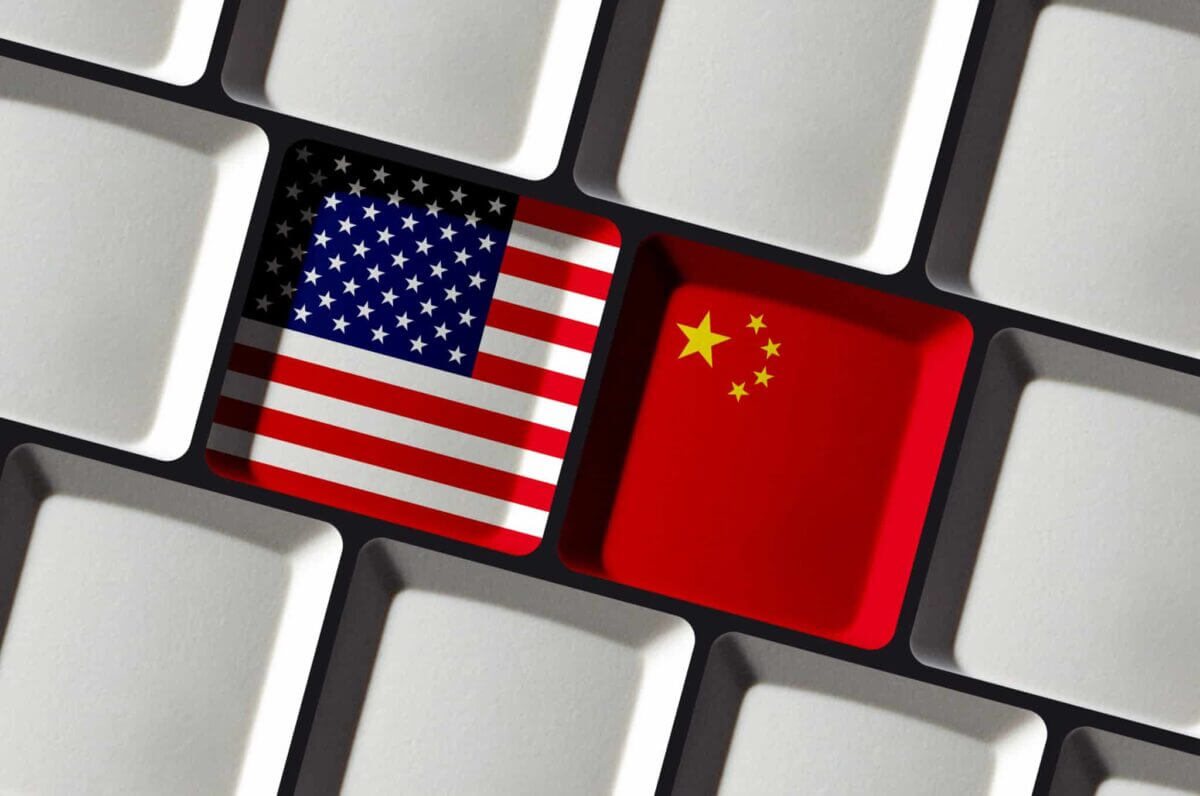
U.S. and China Race for Control of Future Global Technology
Experts have cautioned that the U.S. might lose its current position as the leader in technological advancements and infrastructure, but China’s ambition to take the spot might force the U.S. to stay on its toes or be replaced.
China is more inclined to take a more individual and exclusive approach in developing futuristic technology. This is due to economic and geopolitical influences. Meanwhile, the U.S. is well-positioned to stay ahead, especially by taking advantage of its alliance with other economies to restructure domestic policy. And increase its ability to compete against the second-largest economy.
The U.S. and China, are currently locked in an unsettled trade war. They are in a race to dominate next-generation technological fields like Artificial Intelligence (A.I.) and 5G networks.
China’s Roadmap to Becoming a World Leader in Key Technological Areas
In 2015, China, through its Ministry of Industry and Information, launched “Made in China 2025,” a plan that showed Beijing’s intention to shift from a low to high-end manufacturer and producer of goods.
In 2017, China again announced in a State Council’s document, its plan to become a $150Billion industry leader in the world in Artificial Intelligence by 2030.
“Artificial intelligence has become a new engine of economic development.”
Consequently, China is currently preparing to launch the “China Standards 2035.”
A plan whose main objective is to control technologies such as A.I., Internet of Things (IoT), and Cloud Computing.
“China Standards 2035 is a mixture of local demands and the need to progress their own proficiently and their longing to set the principles, truly and metaphorically, abroad. ” Said, Andrew Polk.
The 2035 plan indicates China’s plan to influence how everyday technologies in the future will operate. Which has far-reaching implications of the extent of Beijing’s power globally.
In a recent webinar held by the Brookings Institution on Assessing China’s Technological Reach in the World, Frank Rose, a Senior Fellow, and Security Strategist, said: “U.S-China Competition is essentially about who will control the global information technology and standards.”
The U.S. Still In the Lead in Artificial Intelligence
The U.S. is still the world-leading economy in Artificial Intelligence advancements, despite China’s efforts, according to a study by the Center for Data Innovation (CDI).
“Despite China’s bold A.I. initiative, the United States still leads in absolute terms. China comes in second, and Europe lags further behind.”
Another report by Citi said that out of 48 economies, the U.S. is in the lead in A.I. Moreover, the other 47 economies will have a difficult time trying to catch up with U.S.’s 2020-2030 AI advancements.
U.S. strength in A.I. competitiveness has been attributed to its A.I. investment. That includes the support of academic research and the issuance of A.I. patents. Additionally, it helps that many technology companies are based in the U.S.
Coming in close in the second position, China seems ready to take the U.S. head-on. Therefore, analysts caution the U.S. that it cannot afford to slack. If it wants to maintain its number one position.
According to Michael Brown, the director of defence innovation unit at the U.S. DOD, China will still need to catch up with the U.S. in two key areas. These are semiconductors and jet engines. He added China is not quite there, but the U.S. cannot afford to slow down.
“I think they very much can compete. That’s what makes me very concerned. If we don’t wake up and see what we need to do to compete.”
The U.S. Needs to Rally Allies to Stay Ahead
Compared to the U.S. 2% GDP contribution from biotech, China’s target stands at about 4%. As the most dedicated country with the potential to scale up and boost its domestic biotech sector.
Scott Moore, the director of Penn Global China Program at the University of Pennsylvania, stated that this makes China the “only one whose scale could potentially pose a threat to American pre-eminence.”
Experts state that the U.S. has the option to realign its domestic policy with that of its allies to become more competitive. Because it seems China is likely to try and develop majorly on its own.
In the Webinar, Andrew Imbrie, a senior fellow with the Center for Security and Emerging Technology at Georgetown University, said:
“The U.S. and its allies comprise almost two-thirds of global R&D, and there are extraordinary ways we can try to leverage that pool of research and development and coordinate on shared priorities.”
Additionally, Brown added that the U.S. needs to rethink its quarterly profits approach to business models, compared to China’s long-term view.




